As its name explains, the alpine butterfly lives in the Alpine Belt above tree lines (high altitudes where forests do not grow). They become active only on sunny days.
In the main islands, there are 9 kinds of Alpine butterflies, which are the Aporia hippie, Anthocharis cardamies, Colias palaeno, Erebia, Erebia ligea,Oeneis norma, Aglais urticae, Poplar admiral, and the Potanthus flavum. In the Japan Alps, all kinds of alpine butterflies living in the main island of Japan can be seen.
They had multiplied over the main island long ago when Japan was in the grips of colder weather and they remained in the Alpine Belt when the weather warmed.
However, by definition, the Poplar admiral lives in the forest and Anthcharis cardamies can be seen at an altitude lower than 1,000 m.
Colias palaeno
Near Threatened
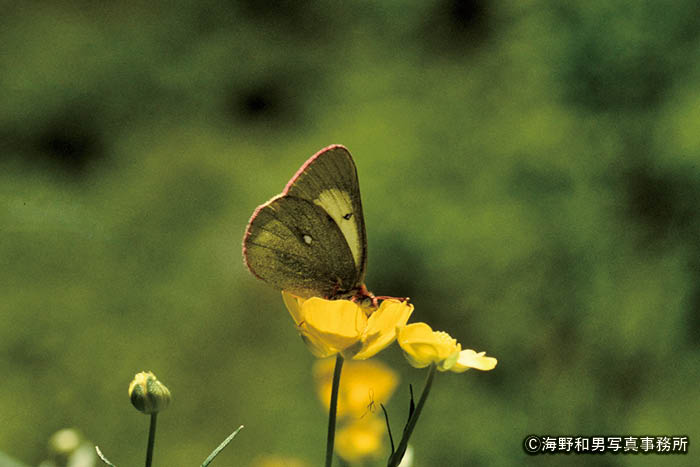
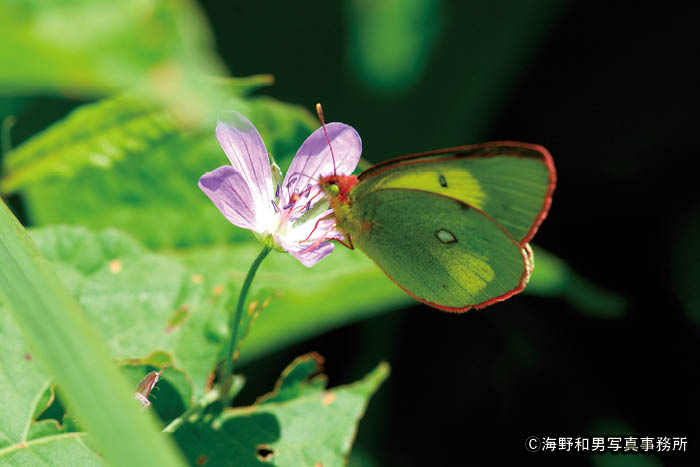
They live in grass fields near ridgelines in the North Japan Alps such as Mt. Jyounen-dake. In the group of Mt. Asama-yama, they exist mainly around Yunomaru at altitudes around 2,000 m. The edible grass is Vacciniums uliginosum. The outbreak occurs once a year in July and they become active only on sunny days. Under bad weather conditions, they cannot be seen.
Aporia hippie
Endangered species IB
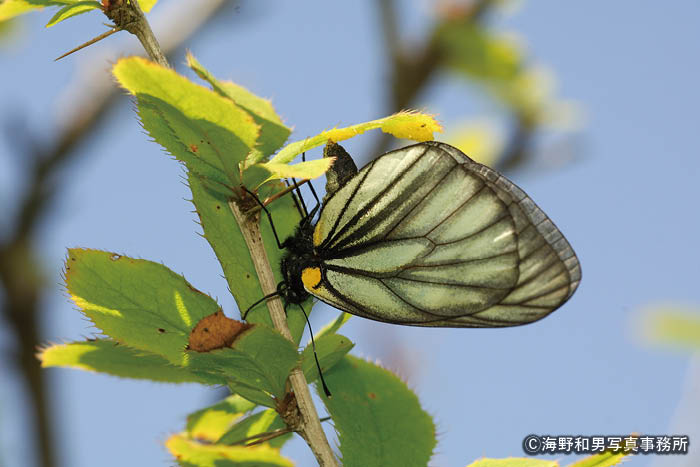
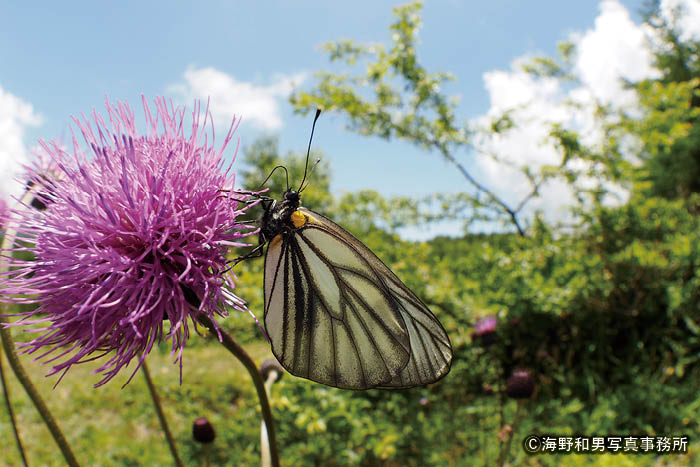
The outbreak occurs once a year in July; they used to live in Kami-kochi, but they were exterminated and cannot be seen in the area any longer. They live in Mt. Yatsu-gatake, however, they are facing extinction. They used to be observed in the South Japan Alps, but they seem to have been exterminated in most places. Their larvae hibernate as a group. Due to this habit, they were an easy target and overhunted before protection was put in place.
Poplar Admiral
Endangered species II
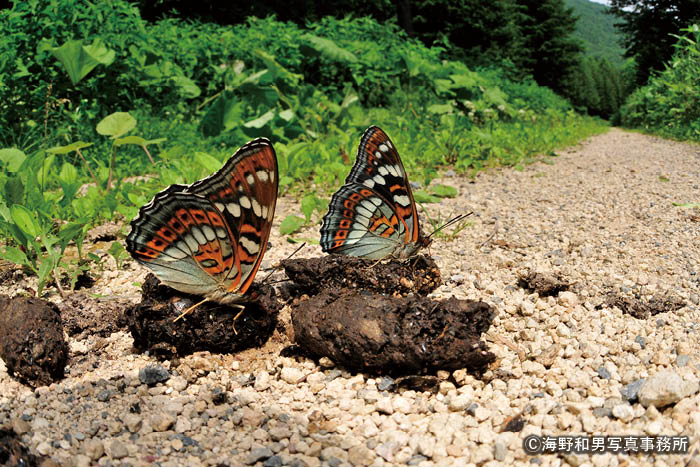
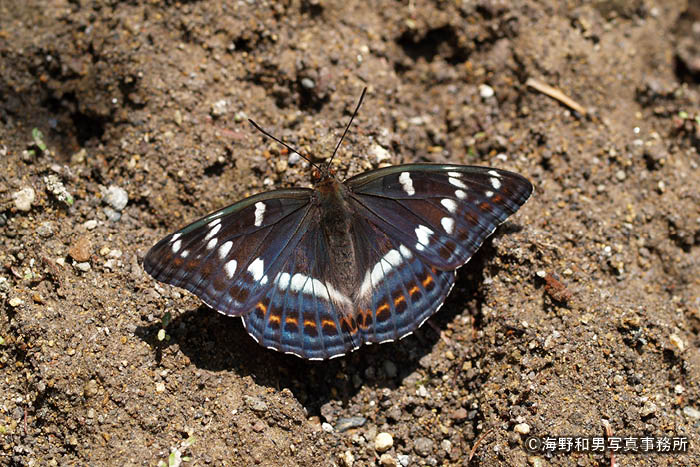
The outbreak occurs once a year in July and they live in low valleys at somewhat lower altitudes, such as Kami-kochi. They are relatively easily found in Kami-kochi and they live in areas of over 1,000 m altitude in the North and South Japan Alps and Mt. Yatsu-gatake. However, their numbers outside of Kami-kochi are so small that they are hardly encountered.
Potanthus flavum
Endangered species IA
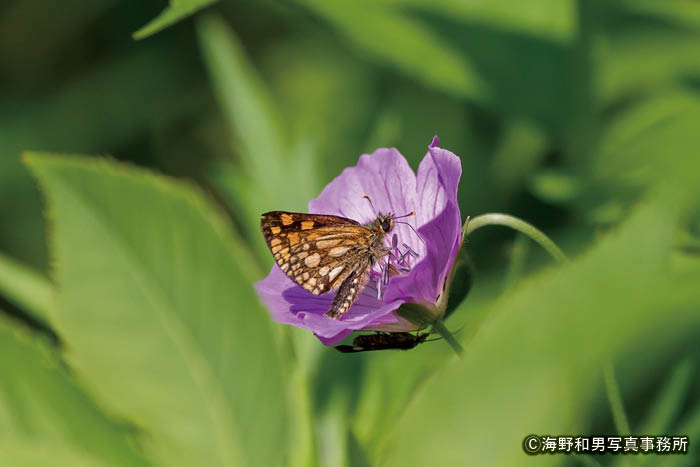
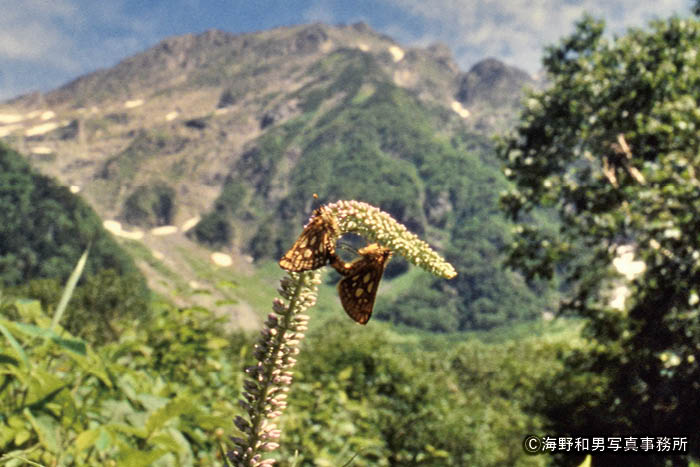
They are found in Dakezawa in the North Japan Alps and Mt. Kita-dake in the South Japan Alps. They become active from the middle of July to early August. The edible grass is Langsdorf’s reedgrass of the Poaceae group. They can be seen in the grass field near Dakesawa hut.
Oeneis norma
Endangered species IA
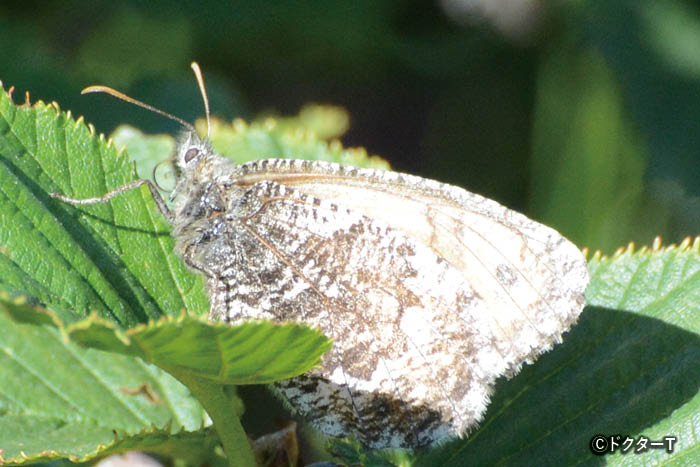
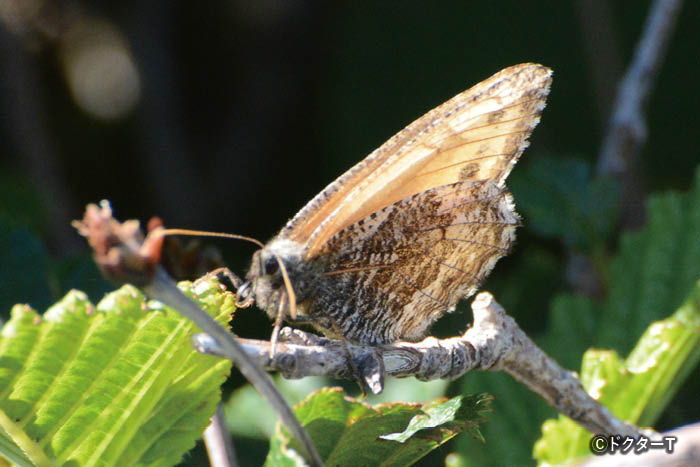
The outbreak occurs once a year in August and they live in Pinus Pumila near the ridgelines of Mt. Sugoroku-dake, Mt. Cho-gatake, and Mt. Jyonen-dake. There are some places near by ridgelines in Mt. Yatsu-gatake as well. When they rest on rocks, their protective coloration works so well that they are very hard to be found. They fly well on sunny days so please observe them closely when they perch.
Observing area of the Oeneisnorma
Lycaeides subsolanus yarigadakenaus
Endangered species II
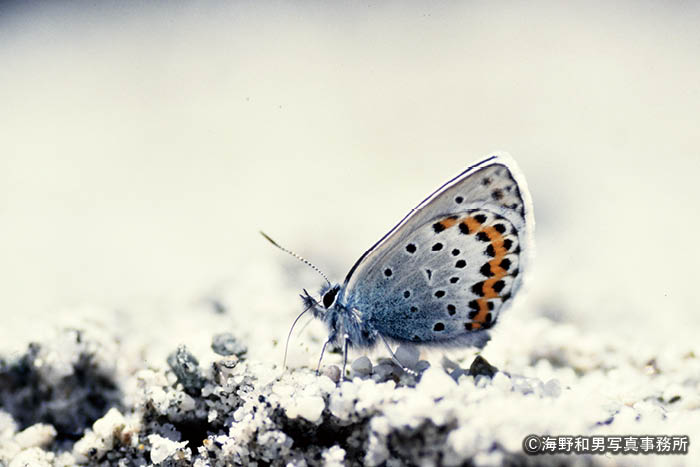
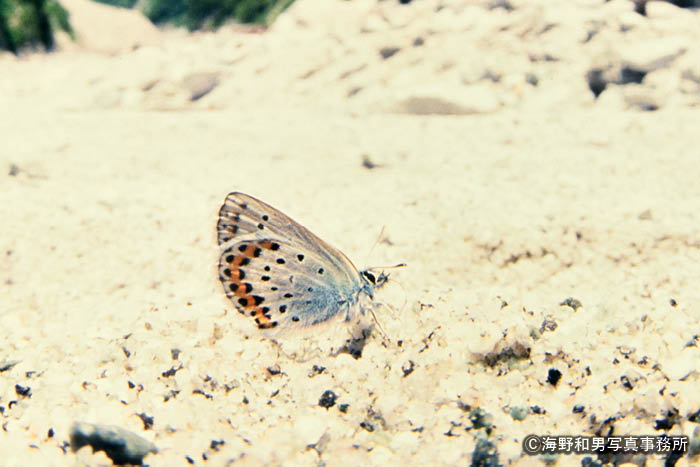
They are beautiful blue colored Lycaeides, which can be seen near by streams in the North Japan Alps. Lycaeides subsolanus yarigadakenaus is a subspecies of Lycaiedes subsolanus and they are usually smaller than lycaiedes susolanus. The edible grass is mainly hedysarum vicioides. The outbreak occurs once a year in July.
Anthocharis cardamies
Endangered species II
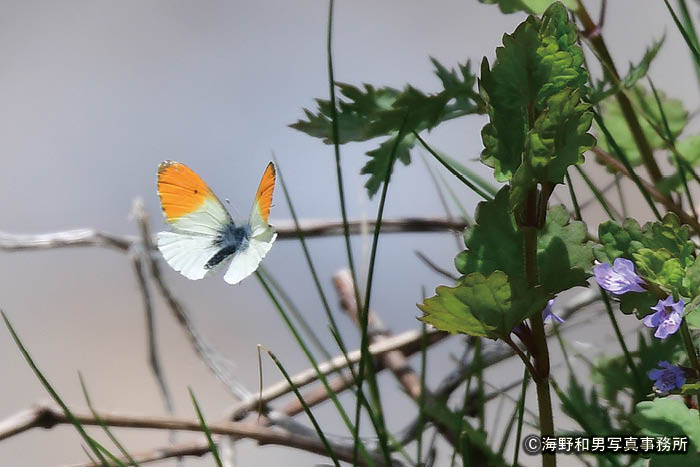
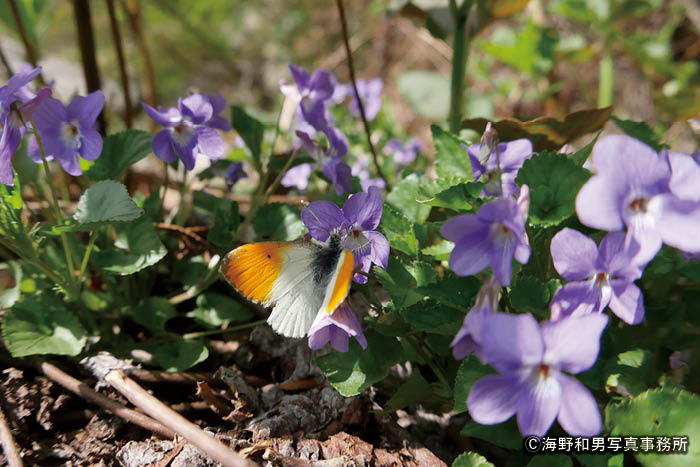
The outbreak occurs once a year, from the end of July to August. They live along the streams in the North Japan Alps, Myoko, Togakushi, the South Japan Alps and Mt. Yatsuhigatake at an altitude above 1,500 m. However, some can be seen in areas below 1,000 m in altitude as well. The edible grasses are arabis lyrata var. kamtschatica etc. They can be seen relatively easily in Ougi-sawa, therefore, many photographers visit there.
Observing area of the Anthocharis cardamies
Erebia
Near-Threatened
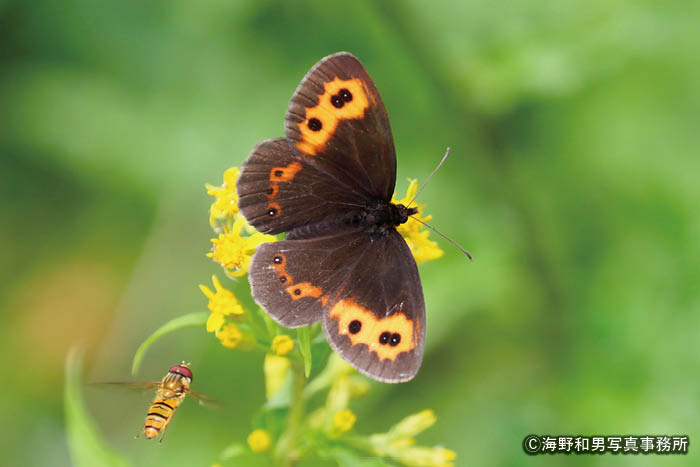
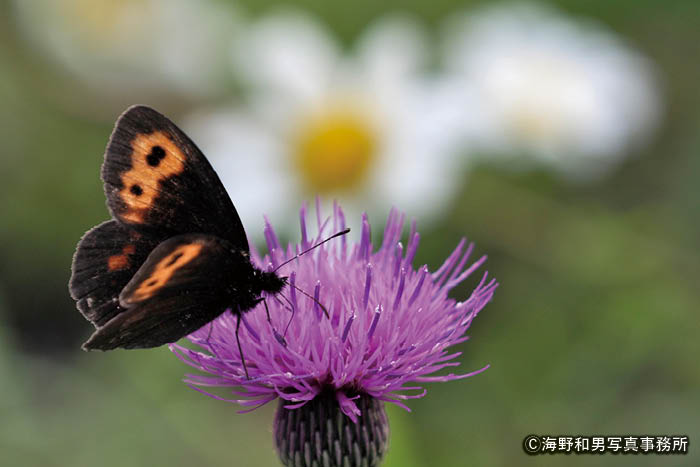
They are the most distributed among the Alpine butterflies and can be seen easily. They also come out the latest and can be seen from the middle of August to the end of the month. They can be seen in areas around 1,500 m to 2,000 m in altitude in the Japan Alps, Mt. Yatsu-gatake, the Asama mountains, and in the Touhoku area. In Hokkaido, they are categorized as butterflies in the lowland belt.
Aglais urticae
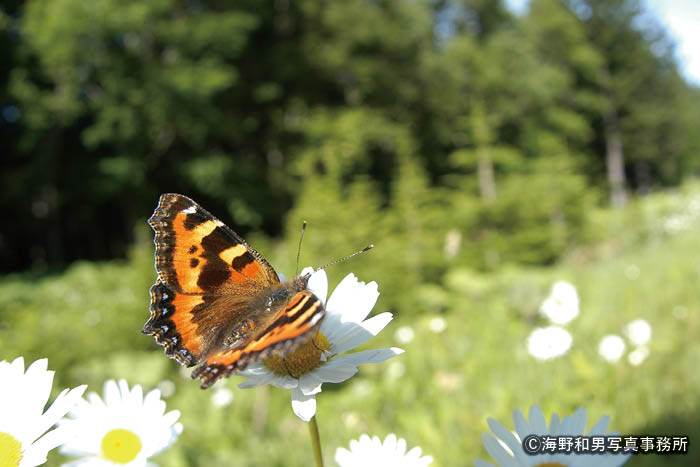
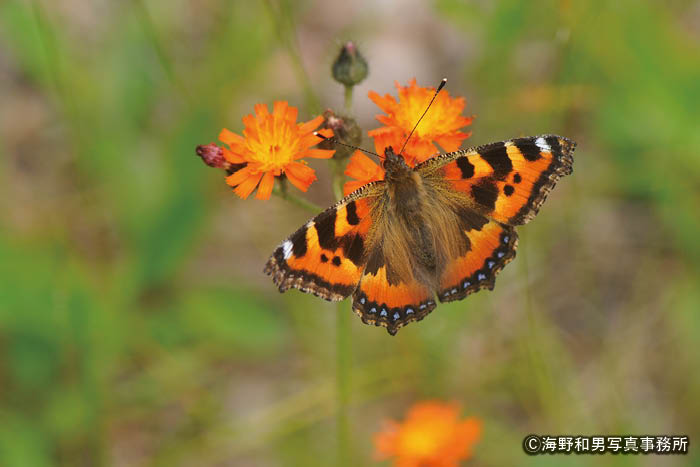
They hatch once a year at the end of July and hibernate as adults. They can be seen in those areas above 1,500 m in altitude in August and the following May when they come out of hibernation. They fly towards flowers. Their wings are not pretty in the spring.
Erebia ligea Near-Threatened
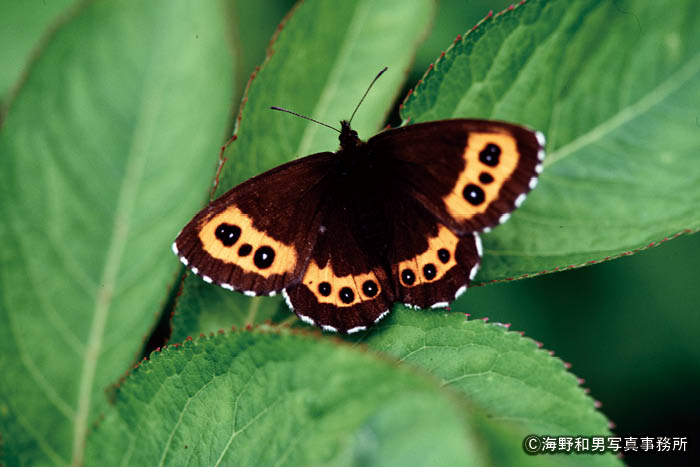
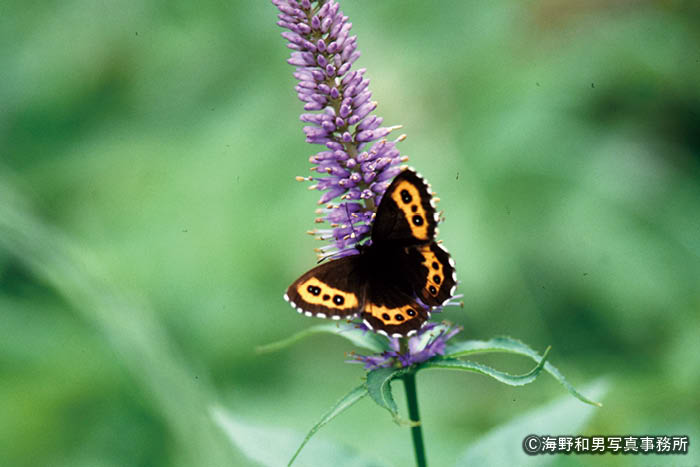
They appear to live in grass fields above 2,000 m in altitude in the South, the Central, and the North Japan Alps, and in Mt Yatsu-gatake. They are fairly easily witnessed among the Alpine butterflies. You may see them in flower fields from the end of July to August if you pay close attention.